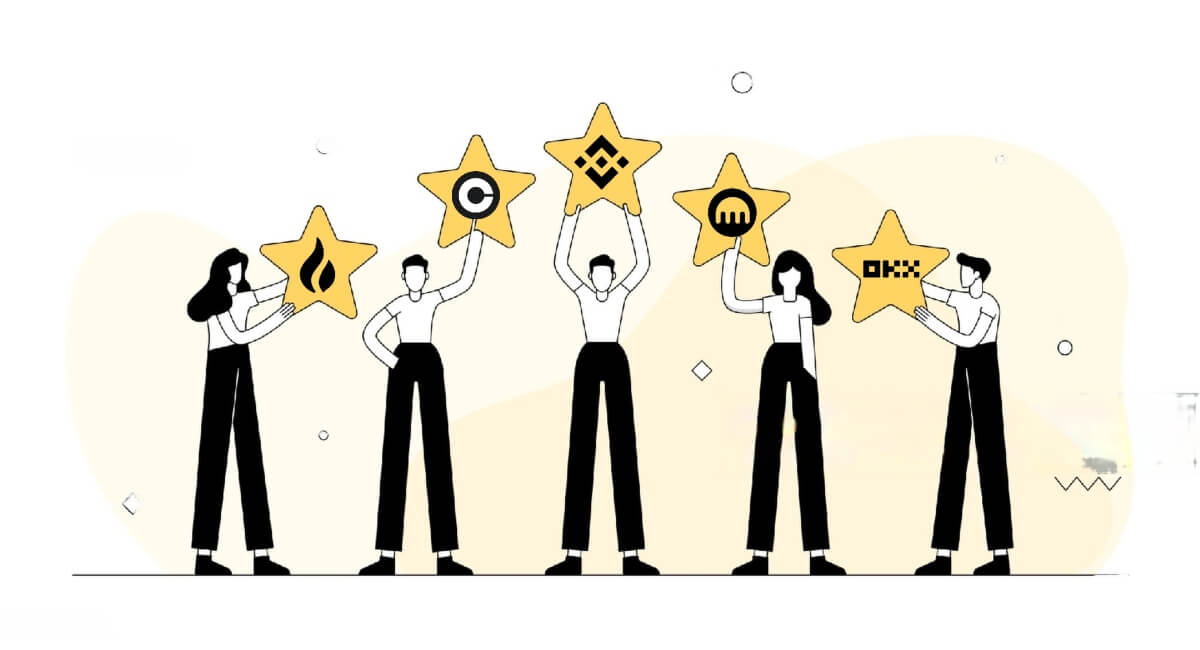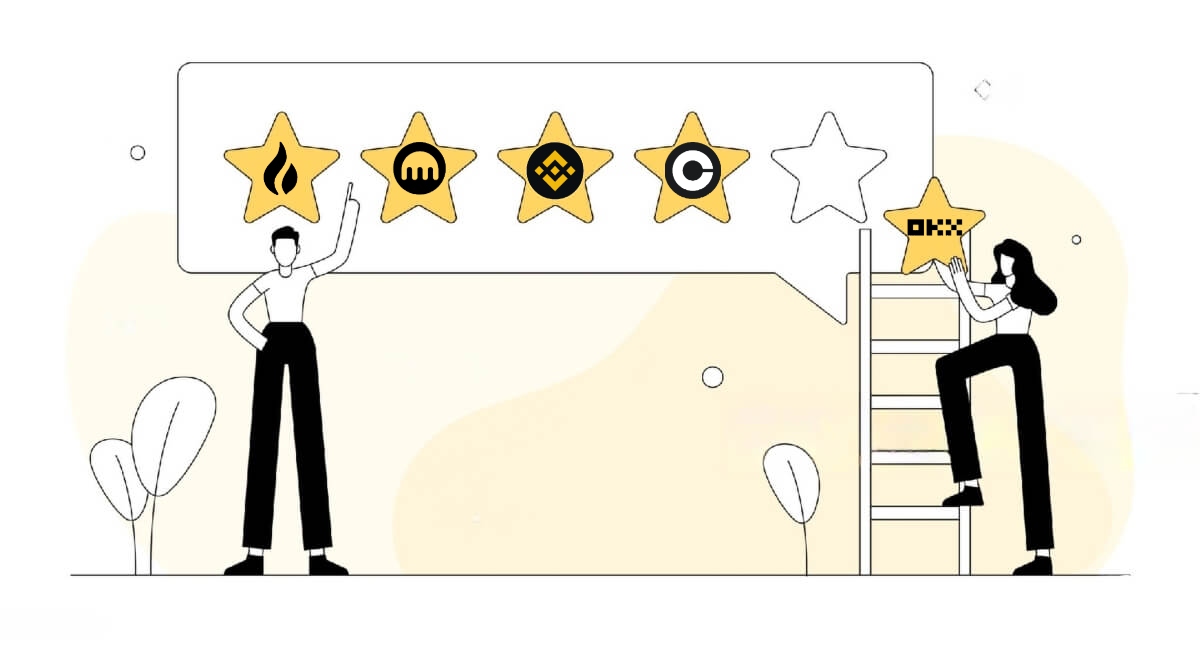
Picture this: you’re embarking on a journey into the world of cryptocurrencies, excited about the possibilities and potential profits. You’ve done your research, chosen your first cryptocurrencies to invest in, and now you’re ready to take the plunge. But before you dive headfirst, there’s a crucial step you mustn’t overlook – reading crypto exchange reviews.
Crypto exchange reviews are like your compass in this vast, sometimes bewildering landscape of digital currencies. They’re your insider’s guide, your trusted friend who’s been there and done that. In a world where the right decisions can lead to financial freedom, and the wrong ones to costly mistakes, these reviews are your lifeline.
How Crypto Exchanges Impact Your Investments
Now, let’s talk about why this matters. Crypto exchanges are the bridges between you and the world of cryptocurrencies. They’re the platforms where you buy, sell, and trade these digital assets. Think of them as the marketplaces of the crypto world, and your investments are on display here.
The performance of your investments, your ability to buy low and sell high, and your overall experience in the crypto space are significantly influenced by the exchange you choose. Some exchanges offer low fees, while others have a wide variety of coins. Some are user-friendly, while others cater to professional traders.
The right exchange can make your journey smoother, more profitable, and less stressful. Conversely, the wrong choice can lead to frustration, losses, and sleepless nights. So, when it comes to crypto exchanges, knowledge is not just power – it’s your financial guardian.
What is a Crypto Exchange?
Let’s start with the basics. A crypto exchange, short for cryptocurrency exchange, is like the digital version of a stock exchange. It’s a platform where you can buy, sell, or trade cryptocurrencies like Bitcoin, Ethereum, and thousands of others.

Their purpose? Well, it’s pretty simple. Crypto exchanges exist to facilitate transactions in the world of digital currencies. They provide a secure and organized space where buyers and sellers can meet, agree on prices, and make their trades. Without them, the crypto market would be chaos.
Role of Crypto Exchanges in the Cryptocurrency Ecosystem
Now, picture the cryptocurrency ecosystem as a bustling city. Within this city, crypto exchanges are the heart, pumping lifeblood into the system. They create liquidity, enabling coins to flow from one person to another. Without them, cryptocurrencies would be stuck in a digital vault, gathering dust.
Exchanges are also gatekeepers. Exchanges set the prices for cryptocurrencies based on supply and demand. They decide which cryptocurrencies get listed for trading. They’re where you can discover new, innovative tokens and invest in projects you believe in. The choices they make can send ripples through the entire ecosystem, affecting the value and perception of different coins.
Historical Context of Crypto Exchanges
Now, let’s step into the time machine for a moment. The history of crypto exchanges is a rollercoaster ride. From the early days of Mt. Gox, which sadly met a tragic end, to the rise of giants like Coinbase and Binance, the evolution of these platforms mirrors the rapid growth of the crypto space itself.
Understanding this history can give you insights into how exchanges have evolved, the challenges they’ve faced, and the lessons they’ve learned. It’s like tracing the footprints of pioneers in a new frontier.
In the beginning, there were only a handful of exchanges, and they were rudimentary at best. But as the demand for cryptocurrencies surged, so did the complexity and diversity of exchanges. Today, there are hundreds of them, each with its own unique features and quirks.
How Does a Crypto Exchange Work?
Have you ever wondered how these platforms actually work? Let’s peel back the curtain and explore the mechanics of crypto trading.
When you dive into the world of crypto exchanges, it’s like entering a bustling digital marketplace. Imagine it as an online bazaar for buying and selling cryptocurrencies. The heart of it all is the trading engine, which is like the auctioneer at a live market.
Here’s how it works: You, the trader, place an order to buy or sell a specific cryptocurrency at a certain price. This order goes into the order book. Think of it as a giant ledger where all the pending buy and sell orders are listed.
Now, when someone else places an order that matches yours – say, they want to sell at the price you’re willing to buy – voilà! A trade happens. It’s like haggling with a fellow shopper until you agree on a price at a flea market.
Order Types and Matching
Order types are your tools for navigating this crypto marketplace. You’ve got market orders, where you buy or sell right away at the current market price – think of it as grabbing the ripest fruit from the market stall without negotiating.
Then there are limit orders. These are like haggling; you set a specific price, and your order will only execute when the market hits that price. It’s like saying, “I’ll buy these apples, but only if they’re $1 each.”
Order matching is where the magic happens. The exchange pairs up buyers and sellers, making sure each trade is fair. If your limit order matches someone else’s, congratulations, you’ve struck a deal.
Liquidity and Trading Pairs
Now, let’s talk about liquidity – the lifeblood of any exchange. Liquidity is how easily you can buy or sell an asset without affecting its price. It’s like having enough shoppers in the market; the more, the better.
Trading pairs are crucial here. These are like the currency you use in this marketplace. Bitcoin, Ethereum, and others are your trading pairs. When you trade, you’re usually swapping one cryptocurrency for another, like trading dollars for euros at a currency exchange.
Some pairs are super liquid, like BTC/USD, and ETH/BTC, while others might be less so. It’s like trading a rare collectible for something equally rare – fewer takers, but potentially higher rewards.
Role of Wallets in Crypto Exchanges
Now, let’s not forget about wallets. They’re like your pockets in this bustling marketplace. Crypto exchanges have two types of wallets: hot and cold.
Hot wallets are like the cash in your front pocket – they’re accessible for quick trades but may be vulnerable to theft. Cold wallets are like your savings account – secure, offline storage for long-term holding.
When you trade on an exchange, your coins start in a hot wallet. But for extra safety, especially if you’re not planning to trade often, consider transferring them to a cold wallet. It’s like stashing your valuables in a vault.
Types of Crypto Exchanges
Let’s chat about the various types of crypto exchanges available today. Each type has its charm, and as you journey through the crypto realm, you’ll likely use a mix of these exchanges.
Centralized Exchanges (CEXs)
Centralized Exchanges, or CEXs, are where most folks start their crypto adventure because they’re user-friendly and offer a wide range of cryptocurrencies. Examples? Sure, you’ve got big players like Coinbase, Binance, and Kraken. These platforms are like the shopping malls of crypto – everything’s under one roof.
Decentralized Exchanges (DEXs)
Now, if you’re more of a maverick and you want to keep things between you and the blockchain, Decentralized Exchanges, or DEXs, are your jam. These are like the Wild West of crypto, where you trade directly from your wallet without handing over your assets to a middleman. Uniswap, SushiSwap, and PancakeSwap are some popular DEXs. It’s all about control and privacy here.
Peer-to-Peer (P2P) Exchanges
Imagine a crypto exchange that’s all about direct, person-to-person trades. That’s P2P exchanges for you. LocalBitcoins and Paxful are prime examples. It’s like you and a buddy swapping baseball cards, but with Bitcoin. No intermediaries, just you and your fellow crypto enthusiasts.
Hybrid Exchanges
Hybrid exchanges are a bit of a mix, like a fusion restaurant. They combine features of both centralized and decentralized exchanges. Take, for instance, the likes of KuCoin and IDEX. You get the speed and variety of a CEX, along with some DEX-style control. It’s a bit of the best of both worlds.
Pros and Cons
Now, let’s break down the pros and cons of these different exchange types. Think of it like comparing the features of different smartphones before choosing the one that suits you best:
| Type of Exchange | Pros | Cons |
|---|---|---|
| Centralized Exchanges | User-friendly | Custodial (you don’t control your keys) |
| Potential for hacks and downtime | ||
| KYC/AML requirements can be invasive | ||
| Decentralized Exchanges | Control over your funds | Limited liquidity |
| Privacy | Can be tricky for beginners | |
| No KYC/AML | Limited range of cryptocurrencies | |
| Peer-to-Peer Exchanges | Direct trades | Risk of scams |
| Privacy | Price volatility (depends on counterparty) | |
| Can be more private | Limited payment options | |
| Hybrid Exchanges | Blend of CEX and DEX features | Not as decentralized as pure DEXs |
| More control than CEXs | May not offer the same liquidity as CEXs | |
| Variety of cryptocurrencies | Complexity in user interface |
Remember, the right exchange for you depends on your preferences, risk tolerance, and what you’re looking to achieve. So, choose wisely.
How to Choose a Crypto Exchange

Choosing the right crypto exchange is like picking the perfect pair of shoes; it should fit your style and, more importantly, be comfortable. Let’s discuss factors to consider when selecting an exchange so you can make this choice confidently.
- Security and Safety: Security should be your top priority. Look for exchanges with robust security measures like two-factor authentication, cold storage of funds, and a good track record when it comes to safeguarding user assets. MarketsXplora knows which exchanges have top-notch security measures in place, and we’re not shy about telling you in our crypto exchange reviews.
- Supported Cryptocurrencies: Not all exchanges offer the same range of cryptocurrencies. If you’re into popular coins like Bitcoin and Ethereum, most exchanges have you covered. But if you’re seeking more obscure tokens, make sure the exchange supports them.
- Trading Fees and Costs: These can eat into your profits, so pay close attention. Exchanges have various fee structures – maker/taker fees, withdrawal fees, etc. MarketsXplora does the math for you, so you know exactly what you’re paying.
- User Experience and Interface: A clunky, confusing interface can turn your crypto journey into a nightmare. Opt for exchanges with user-friendly interfaces that align with your trading needs.
- Customer Support: Imagine being stuck with a transaction issue and having no one to turn to. Choose an exchange with responsive customer support that can assist you when you need it most.
- Trading Tools and Features: Advanced traders might need charts, graphs, and other analytical tools. If you’re just starting, a simple platform might be more your speed. Make sure the exchange offers the features that match your skill level.
Step-by-Step Guide to Choosing the Right Exchange
But wait, there’s more! MarketsXplora doesn’t just throw you in the deep end. They’ve got a step-by-step guide that walks you through the process of picking the perfect exchange for you.
- Research: Start with research. Read reviews, ask for recommendations from fellow crypto enthusiasts, and explore forums to get a sense of an exchange’s reputation.
- List Your Priorities: Create a checklist of your priorities. Is it security, low fees, a specific coin, or ease of use? Having this list will help you narrow down your options.
- Compare Options: Compare the exchanges that align with your checklist. Look at their fee structures, supported cryptocurrencies, and user feedback.
- Test the Waters: Consider starting with a small deposit or a test trade to get a feel for the exchange. This way, you can gauge if it meets your expectations without risking a substantial amount.
- Stay Informed: Crypto is ever-evolving. Stay updated with the latest news about your chosen exchange and the overall crypto market.
Tips for Evaluating Crypto Exchange Options
- Diversify Your Holdings: Consider using multiple exchanges for different purposes. One might be great for buying, while another is better for trading.
- Stay Cautious: Be wary of exchanges promising unrealistically high returns or asking for excessive personal information. Trust your instincts; if something feels off, it probably is.
- Regularly Review Your Choice: As your needs change and the crypto landscape evolves, reassess your choice of exchange periodically to ensure it still suits your requirements. And, of course, consult MarketsXplora’s unbiased reviews to get the inside scoop on each exchange’s strengths and weaknesses.
How We Review Crypto Exchanges at MarketsXplora

Wondering what goes on behind the scenes when we review crypto exchanges at MarketsXplora? Well, wonder no more because we’re about to pull back the curtain and give you a sneak peek into our process.
Step 1: Thorough Research
Our journey begins with extensive research. We dive deep into the crypto exchange’s background – who’s behind it, where it’s based, and its track record. We want to make sure you’re dealing with a legit player in the crypto world.
Step 2: Security Check
Security is paramount in the crypto realm. So, we put on our cyber-sleuth hats and investigate each exchange’s security measures. We want you to trade with peace of mind, knowing your precious digital assets are safe and sound.
Step 3: User Experience Test Drive
We’re all about making your crypto experience a breeze. That’s why we roll up our sleeves and test-drive each exchange’s platform. We assess its user-friendliness, speed, and overall experience. After all, you deserve a smooth ride in the crypto universe.
Step 4: Fees and Costs Breakdown
Nobody likes hidden fees, right? We dissect each exchange’s fee structure, so you know exactly what you’re getting into. Transparency is key when it comes to your hard-earned money.
Step 5: Customer Support Check
Crypto doesn’t sleep, and neither should customer support. We reach out to the exchanges to evaluate their responsiveness and helpfulness. You should never feel alone when navigating the crypto waters.
Step 6: Cryptocurrency Menu Exploration
Are you a Bitcoin enthusiast, an Ethereum aficionado, or an altcoin adventurer? We dig into the range of cryptocurrencies each exchange supports. Whether you’re into the classics or the newcomers, we’ve got you covered.
Step 7: Trading Tools and Features Evaluation
Experienced traders often rely on specialized tools. We examine the trading features each exchange offers, ensuring you have the right arsenal for your crypto conquests.
Step 8: Putting It All Together
After gathering all this data, we put it through the MarketsXplora blender. Our experts analyze every nook and cranny, weighing the pros and cons of each exchange. We then craft our unbiased, comprehensive reviews so you can make informed decisions.
So there you have it, folks! When it comes to choosing a crypto exchange, don’t go it alone. Let MarketsXplora be your guiding light. We’ve got the best, comprehensive reviews of crypto exchanges to help you navigate this exciting but sometimes tricky terrain. Happy trading!
